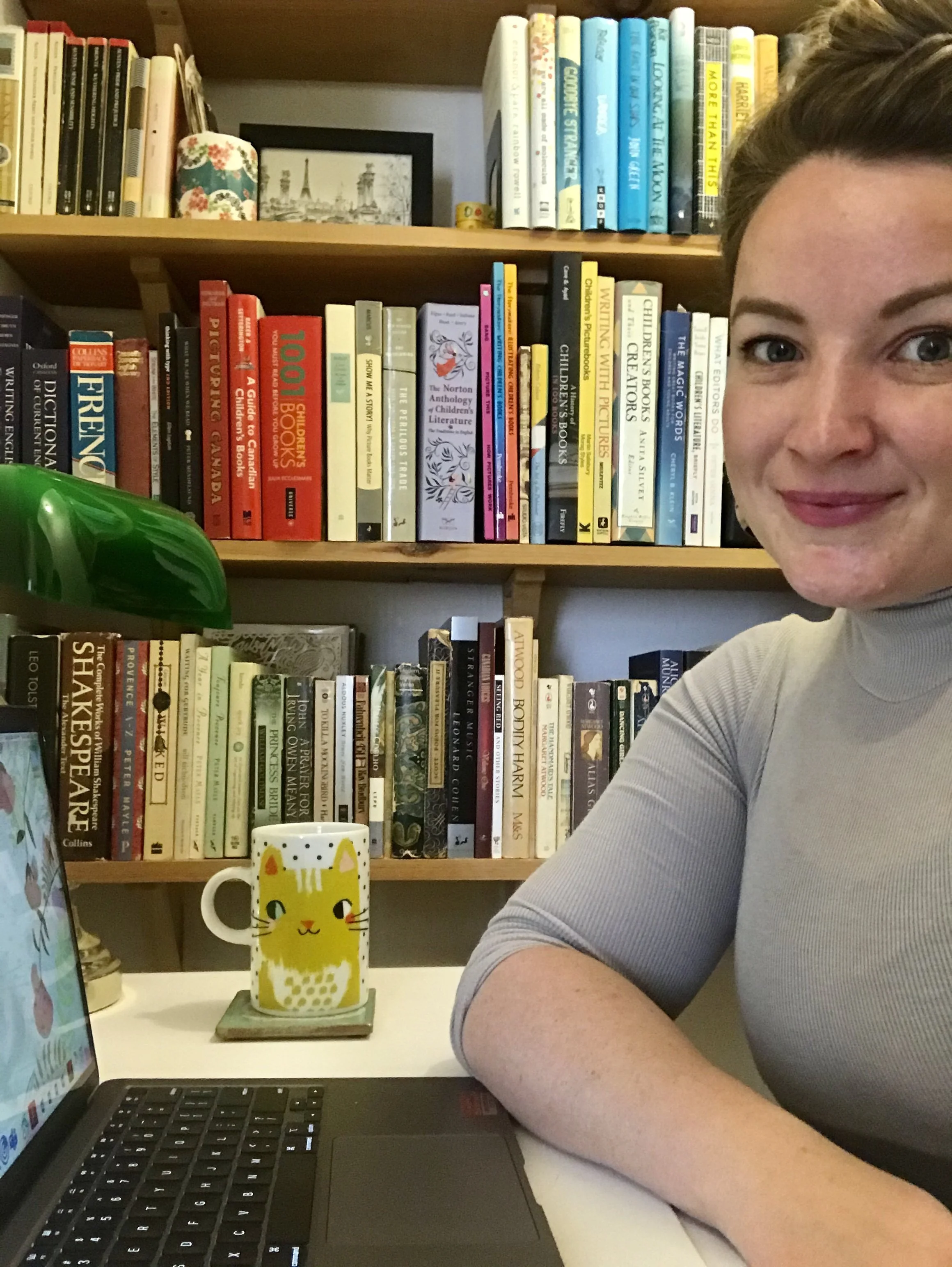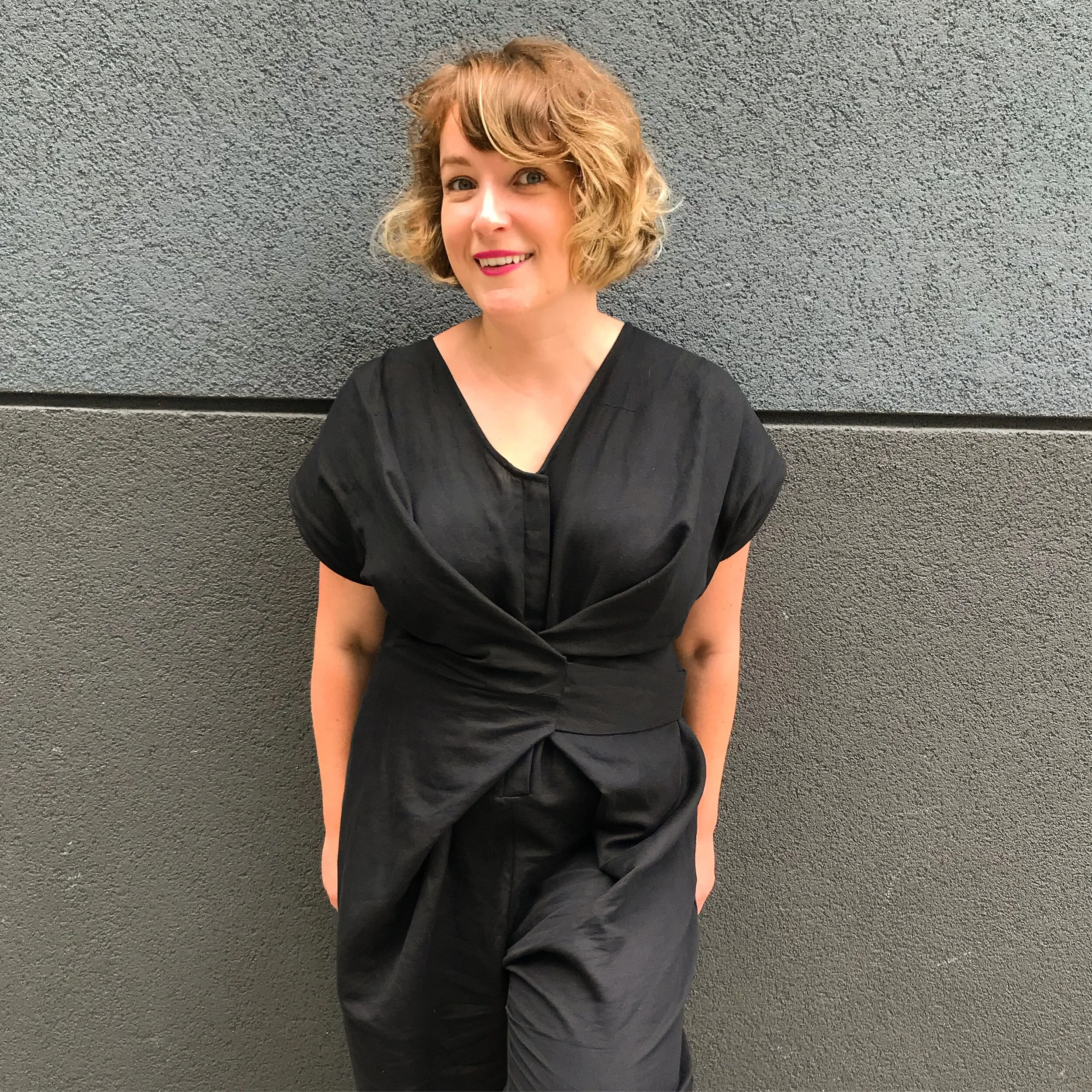Team Beatrice and Barb: Katie Scott, Editor
Katie Scott, editor at Kids Can Press.
On February 6th, 2020, after years of sending picture book manuscripts out into the void and receiving rejection after rejection, I put my daughter down for a nap, lay down on my bed, and opened my email. There was a message waiting for me with the subject line “Hello from Kids Can Press!” That email was from Katie Scott, and editor at Kids Can Press, informing me that she was interested in acquiring Beatrice and Barb.
It takes many talented people to transform a story from early draft to finished picture book. All of them are important. While the illustrator is absolutely a full partner and co-creator in the story, the collaboration between the author and the illustrator happens somewhat differently than most people imagine (more on this in another post!). In most cases, the person an author works with most directly with throughout the publishing process is their editor. My editor, Katie Scott, isn’t just any editor. She’s the best.
While I have had the joy of meeting Katie twice in person twice, almost all of our professional collaboration happens remotely, in the form of countless emails and the occasional Google Meet or phone call. We do most of our talking through the track changes and comments features of Google docs.
Over the past three and a half years, Katie has not only been my partner in transforming this manuscript into the book you will soon be able to walk into a bookstore and buy, she’s also helped me become a much better writer. She always made me feel comfortable asking questions when I didn’t understand or agree with a note she’d given me. I always felt like I had a voice and a say, and there was always space for a conversation whenever we hit a sticky spot in the revision process. Katie would generously explain her thinking so I would understand the “why” behind her critique. This took time and patience on her part, but it taught so much to me.
The messy-but-necessary process of going back and forth trying to solve narrative problems helped me strengthen my own skills, instincts, and understanding of how a picture book should look and sound. It also yielded some of my favourite spreads and characters in the book. For example, I had so much trouble figuring out the best way for my protagonist, Beatrice, to actually acquire the knowledge she needed to take care of of her pet Barb. Early on, I had her take Barb to school, where her teacher took her to the library and handed her a book that contained everything she needed to know. In our very first meeting together, over a Valentine’s day coffee in 2021, Katie gently pointed out that this didn’t give Beatrice very much agency. “I think she needs to seek out an expert,” she said. Thus, Millicent, owner of Millicent’s Marvelous Plant Co., and my hands-down favourite character in this book, was born.
I hope you will pick up a copy of Beatrice and Barb at your local bookstore or library, so you can see for yourself the fruits of Katie’s extraordinary work. You should also check out the many other incredible titles she has worked on. And keep your eyes peeled for my next collaboration with Katie (illustrated by Risa Hugo, due out in Spring, 2025, title TBA), which I can not wait to share more about!
1. Walk me through a typical work day for Katie Scott, editor extraordinaire.
Every day is different, depending on what meetings are in the calendar or what priorities I have that week. Someone once told me that working in publishing is like putting out the fire closest to you (the closest fire being the book nearest to going to press). It’s a lot of pivoting and readjusting priorities on a daily — sometimes hourly – basis.
I typically have several meetings a day, including meeting with authors to go over editorial notes, designers to exchange art direction notes, the editorial team to talk about submissions we’re excited about, literary agents to communicate acquisition priorities, the publishing board to champion a project to publish, or an all-company meeting where we’re getting briefed on the latest news at Kids Can Press.
The work outside of meetings ranges from creative (editing, art direction, etc.) to administrative (email, managing my calendar, writing book proposals, preparing P&Ls, etc.).
And I’m reading a lot on off-work hours. I try to read all the big award-winners and bestsellers, and I’m constantly staying on top of publishing industry news in both Canada and the U.S. Or I’m reading for pleasure, which I’m still able to do despite working with books all day. I just finished reading Wolf Hall with the KCP book club, and I’m now diving into All About Love by bell hooks.
2. Tell me a little bit about your relationship to plants. Are you a plant parent? What color is your thumb?
My thumb is light green – let’s say sage. I have three house plants that I’ve managed to keep alive for several years and have even learned to propagate my pothos! The sweet spot for me is house plants that need watering once a week. My apartment building has a communal balcony, and we all take care of the balcony garden, which has some herbs and flower boxes. I love spending time out there in the warmer seasons.
3. Were you allowed to have a pet as a kid? Do you have one now?
Leon, Katie’s first pet.
We always had cats growing up. My first pet was a black-and-white tuxedo cat named Leon. I always thought my parents named him after the furniture store Leon’s… because I watched too many TV commercials as a kid (he was actually named after their real estate agent LOL). My cat now is a tiny grey cat named Bitten, who I’ve had for 17 years. I love her very much!
Katie’s beloved cat Bitten.
4. If Beatrice and Barb has a take away, it might be that in order to care for any living thing -- human, animal, or plant -- you have to really know them, to understand their unique needs. Give me a list of things that make it possible for you, Katie Scott, to thrive!
Feeling connected to family, friends, colleagues, and my community.
Nine hours of sleep.
Moving my body. These days, I’m walking on the treadmill at the YMCA and going to reiki restorative yoga.
Learning something new. I’m currently taking a six-week course on compassion.
Getting out of Toronto … and then coming back and feeling gratitude for all the things that make this city, my community and my apartment feel like home.
5. Creating PBs really is a team sport. What do you love about the collaborative nature of this process? What can be a challenge?
Kids Can Press takes a highly collaborative approach to picture book making — and it’s one of the secrets to our success as a publisher. I love that the final product feels like something we made together as a team and having a shared sense of pride with the creators and my colleagues when a book gets a starred review or wins a major award.
The challenge to collaboration is that it takes more effort and more time. Collaboration is also an acquired skill — you have to learn when to take a note and when to let a note go, and either way to ensure the people you are working with feel understood and heard. All of those steps take effort and time, but I truly believe the pros outweigh the cons when it comes to collaboration.
6. How did B+B find you? What was your journey with this story like?
The first time I read Beatrice and Barb was when I was going through the submissions pile on my desk. It’s a mystery to me how it landed there — but am I ever grateful that it did! I knew right away that I wanted to sink my teeth into the story. I always try to listen to that voice — that eagerness to start working on a manuscript. I sent you an email to say that I loved your story, and we met for coffee to talk about my editorial notes … and the rest is history!
Like any picture book, it came together once Vivian Mineker came on board to illustrate and when she sent her early character sketches. The illustration stage is when the story starts to come alive, and now I can’t imagine Beatrice and her world any other way.
7. What can an author do to make their editor’s job awesome and easy (asking for a friend! lol!)
LOL bless you, truly, for asking! The biggest thing I need from an author is trust in me and in the process. Part of that involves being comfortable with the gaps in time when an author’s not hearing from me, but chances are I’m still working on their book in some way behind the scenes. I also hold a lot of trust in the authors I work with – that they will tell me when something is important to keep in a story or that they will ask questions when something needs clarification.
8. Current obsessions? (Can be bookish or not!)
Book: Wolf Hall by Hilary Mantel
TV show: Wednesday
Food: Peanut butter croissant gelato from Death in Venice
Lipstick (I love lipstick): Clinique Black Honey
Ongoing: My cat Bitten
9. What kinds of stories are you hungry for? What kinds of books or tropes are feeling over saturated right now?
I am hungry for picture books that have something to say. It’s what drew me to Beatrice and Barb when I read that very first draft. You had something to say about what it means to love another being – that loving means knowing what the other needs and providing the best conditions to help them meet their needs. And celebrating that we all need different things to thrive! A common pitfall that I see writers make is not having something to say or not knowing how to articulate the idea on the page, and it’s the one thing I wish writers would pay closer attention to when crafting their stories.
In terms of over-saturation in the market, I’d say picture book biographies.
10. What kinds of stories do you think young readers need and want right now?
Right now, I think we all need content that is funny, light-hearted, and uplifting. It’s been a hard three years, and young readers need stories that make them laugh or feel connected with others.
The best stories are the ones that readers can relate to on a personal level, whether that’s seeing their identities reflected on the page or reading about characters and plots that speak to the lives of real kids today. In publishing, we always say that a book must feel timely and relevant. When we’re considering green lighting a book, we’re not just asking, “Why this book?” We’re asking, “Why this book now?”
11. What is the very best part of your job?
There are two best parts: (1) calling or emailing an author to let them know we want to publish their story, especially when it will be their first published book and (2) holding the finished book in my hand. Making a book is a labour of love, but when you see the final book, it all feels worth it in the end.









